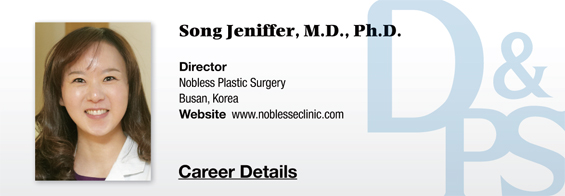
▶ Previous Artlcle : #1-1. Fibroblast Cell Therapy : Current Generation Option
The efficacy of fibroblast cell therapy in the treatment of facial contour deformities, including facial wrinkles and scars, has been evaluated in multiple randomized, blinded, placebo-controlled clinical studies, which aimed to evaluate the improvements expected in the treatment of moderate to severe nasolabial fold wrinkles. According to the study results, the differences in response rates between treatment groups were statistically significant in all cases, with p-values below 0.01. These data has caught worldwide attention, expecting positive response based on this analysis.
FDA proposed a statement clarifying the indication for the use of fibroblast cell therapy;
Fibroblast cell therapy(Lavin TM/Fibrocell/Isolagen Therapy) is an autologous cell therapy indicated for the treatment of moderate to severe nasolabial fold wrinkles in adults over 18 years of age.
[Advertisement] A-One LITE(Facial Diagnosys System) – Manufacturer: BOMTECH(www.bomtech.net)
Although not clarified under FDA statement, aesthetic surgeons are applying cultured fibroblasts with additional scaffolding materials; such as Hyaluronic acid fillers, fibrin products, adipose aspirates etc. As Fibroblasts are part of the structural framework of any tissues in the body, mixture of scaffolds with the concentrated cultured fibroblasts has aid to more stabilized longevity and survival. Longer duration of the Hyaluronic acid and fibroblast mixed injection rhinoplasty, and seemingly higher graft taking in fibroblast mixed micro-fat graft to facials are already being performed in our clinic with a positive attitude.
Safety results should be emphasized for better understanding of the procedure. The most frequent side effects associated were the injection site reactions; erythema, swelling, bruising and pain. Incidents of the events were more commonly observed among fibroblast cell therapy injection group, compared to the placebo injection group. These symptoms were mostly mild and of short duration. There were no serious clinical adverse events, showing that the fibroblast cell therapy is quite safe for the treatment of dermal conditions.
As you can see in the photos taken during clinical trials, it is obvious that the fibroblast cell therapy may not meet our expectation of dramatic improvement(figures), but the gradual rather than immediate improvement in the appearance of the treated wrinkles and acne scars is the truth. Another pitfall of this treatment is the cost in-effectiveness, which obviously remains as a huge obstacle in populational application.
Advance in scientific tissue engineering and regenerative medicine techniques have been long desired by many plastic surgeons and dermatologists. I do believe that my hopes might be carrying too high an expectation, but I, as a scientist in practice of medicine, will be longing to see the day when cellular-based medicine techniques can offer outstanding anti-aging and regenerative medicine for patients in need.
Reference
Han SK, Shin SH, Kang HJ, Kim WK. Augmentation Rhinoplasty Using Injectable Tissue-Engineered Soft Tissue. Ann Plast Surg 2006; 56:251-255
Weiss RA, Weiss MA, Beasley KL, Munavalli G. Autologous culture Fibroblast Injection for Facial Contour Deformities: A Prospective, Placebo-Controlled, Phase III Clinical Trial. Dermatol Surg 2007; 33:263-268
Before & After




Lt: baseline Rt. 6 months post treatment.
-To be continued-




















